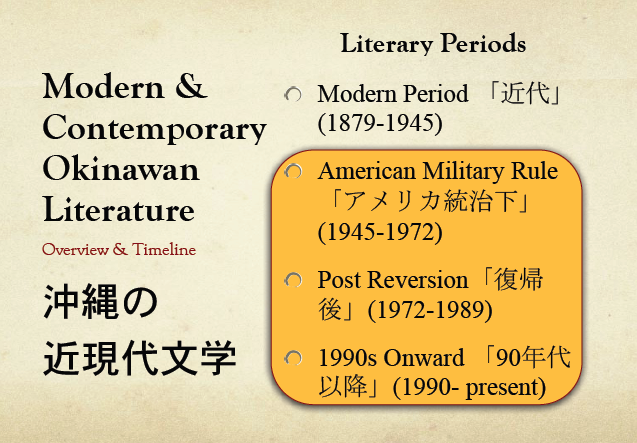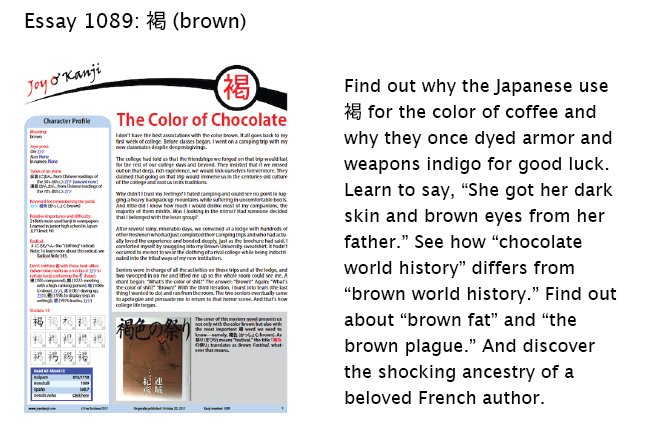Unraveling a Thread
Last week I wrote about attending Kyle Ikeda's lecture on Okinawan literature, and I mentioned that, much to my frustration, his bilingual PowerPoint slides with kanji had flown by, leaving me no way of teasing them apart and sharing them with you. Well, after reading that, Ikeda was kind enough to send me his presentation! What strange relief it gives me to have those kanji in my possession at last!
I've now realized that just two slides tempted and puzzled me. Here's the first:

In this image, only the yellow box jumps out as needing further exploration, particularly this phrase:
アメリカ統治下
American Military Rule
I've now found the following word in the dictionary:
統治 (とうち or とうじ: rule; reign; government; governing)
I'm unfamiliar with 統, but I see thread (糸) and legs (儿), among other things. Who would have thought those would add up to something so powerful? What's really going on with 統?
Henshall tells us that 統 (757: to supervise) combines thread (糸) with 充 (full). The latter acts phonetically here to express "beginning." Thus, we have "the beginning of a thread."
The next bit sounds like pot-induced thinking: "Since this is also the same as its end ..." What?! I guess he means that the beginning of a thread could just as easily be considered the end of the thread. If that's not what he's saying, then I'm lost.
Anyway, he adds that 統 came to mean "thread from end to end" and by extension "lineage." Moreover, he says, the idea of following a thread from end to end led to "overview" and "supervise." That's quite an evolution!
Speaking of evolutions, how did 充 (1362) come to mean "full"? Henshall, again, has the answer: The part above the 儿 represents "newborn child." The 儿 in this case means "crouching person" or "bent legs" but acts phonetically here to express "grown" and possibly "big." All together, we have "a newborn babe growing (big?)," which later came to mean "becoming full."
Now I have a new frustration. I often think that breaking things down to their smallest bits will get me somewhere, but once I've arrived at the "bottom," I feel more lost than ever. And I realize each time that perhaps it's best to accept that the components combine to mean what they do and to focus instead on how two kanji combine in a compound.
However, before I do that in 統治, I need to deal with something else that's nagging at me—namely, how can 治 mean both "to govern," as in 政治 (せいじ: government), and "to cure," as in 治す (なおす: to cure)? Surely, government isn't known for its healing powers!
Back to Henshall to see about that. He calls the etymology of 治 somewhat obscure. The character combines "water" (氵) with "platform" (台). Scholars disagree on the interpretation of this character, but some feel that 治 meant "to bring water to oneself" (i.e., by irrigation) and that this symbolized "control" over the environment, later generalizing to "control."
Now, that analysis is satisfying! What a sturdy bridge it builds between the two main meanings of 治, at least if one perceives bringing oneself water as curative. That works for me.
Of course, the healing meaning falls away in 統治, which breaks down as to rule + to rule.
What simplicity we've achieved after a bit of a muddle! Or is "achieved" too strong here? After all this, I've analyzed just one word out of Ikeda's whole presentation!
I'll return next time with more thoughts on this slide and another. In the meantime, I present a sneak preview of the newest essay:
Have a great week!
❖❖❖
Did you like this post? Express your love by supporting Joy o' Kanji on Patreon:



Comments